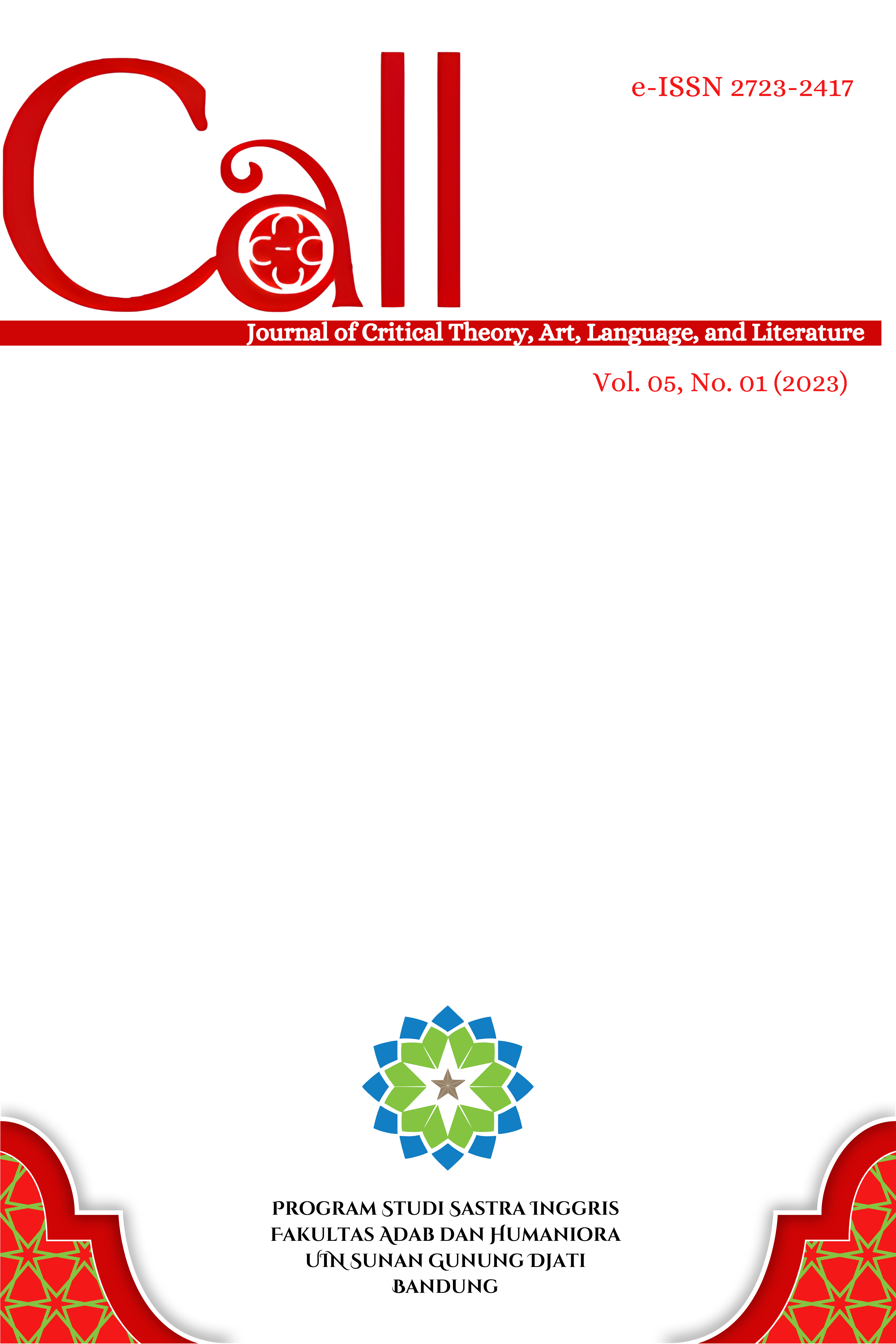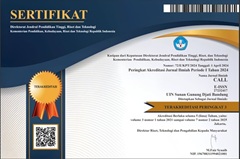LANGUAGE FUNCTIONS IN @onlyjiungs TWITTER ACCOUNT
DOI:
https://doi.org/10.15575/call.v5i1.20760Abstract
This study aimed to identify the language function in tweets from @onlyjiungs. The @onlyjiungs Twitter account's tweets served as the study's source of data. Purposive sampling and the descriptive qualitative approach were utilized in this study to get the answers to its research questions. The findings indicated that among the 31 data, the referential function (14 utterances, or 45,2%) is most frequently used, followed by the expressive function (11 utterances, or 35,5%), the phatic function (2 utterances, or 6,4%), the metalingual function (0%), the conative function (2 utterances, or 6,4%), and the poetic function (2 utterances, or 6,4%). The tweets from @onlyjiungs met every requirement in Hymes' (1974) theory of context SPEAKING, showing that context SPEAKING on a tweet from @onlyjiungs answers every requirement of the theory. The tweets were taken from September 2021 through October 2021. The goals of @onlyjiungs' tweets were intended to be represented and expressed in the final sections of the Twitter post outcomes. The following social act update about Jiung's life was provided by @onlyjiungs. She underlined a particular statement she made in the tweets. Because, they were intended for teens their age, @onlyjiungs's tweets are also frequently written in a casual tone. The typical Twitter tweet mostly focused on describing the purpose of and the message included inside it. The kind of utterances from those tweets generally had a stronger referential function since those Twitter postings' primary purpose was to notify @onlyjiungs' followers who are the readers.
Â
Keywords: language functions, context, pragmatics, twitterReferences
Creswell, J. (2014). Research Design : Qualitative, Quantitative, and Mixed Method. United State: SAGE Publication, Inc.
Creswell, J. W. (2007). Qualitative Inquiry and Research Design: Choosing among Five Approaches (2nd ed.). Thousand Oaks, CA: Sage Publications.
Hymes, D. (1972). The ethnography of speaking. In T. Gladwin & W. Sturtevant (Eds.), Anthropology and human behavior (pp. 13–53). Washington, DC: Anthropological Society of Washington.
Jakobson, R. (ED). (1960). Linguistic and poetics, in T. Sebeok (ed), style in language. Cambridge: M.I.T Press.
Kane, G. C., Alavi, M., Labianca, G., & Borgatti, S., P. (2014). What’s different about social media networks? A framework and research agenda. MIS Quarterly, 38(1), 275-304.
Rahmayani, FH., & Dwiyuliana, R. (2018). An analysis of speech acts performed in the United States of Barrack Obama’s speech election 2009. Project, 1(3), 275-280.
van Dijck, J. (2011). Tracing twitter: the rise of a microblogging platform. International Journal of Media & Cultural Politics, 7(3), 333-348.
Downloads
Published
Issue
Section
Citation Check
License
Authors who publish in CALL agree to the following terms:
- Authors retain copyright and grant the journal right of first publication with the work simultaneously licensed under Attribution-ShareAlike 4.0 International (CC BY-SA 4.0) License that allows others to share the work with an acknowledgment of the work's authorship and initial publication in this journal.
- Authors are able to enter into separate, additional contractual arrangements for the non-exclusive distribution of the journal's published version of the work (e.g., post it to an institutional repository or publish it in a book), with an acknowledgment of its initial publication in this journal.
- Authors are permitted and encouraged to post their work online (e.g., in institutional repositories or on their website) prior to and during the submission process, as it can lead to productive exchanges, as well as earlier and greater citation of published work (See The Effect of Open Access).




